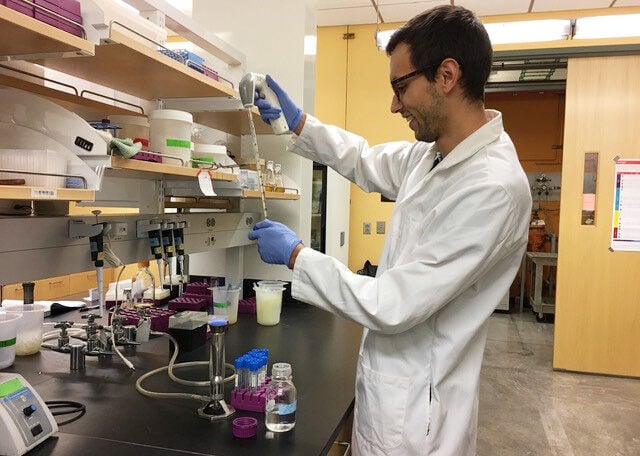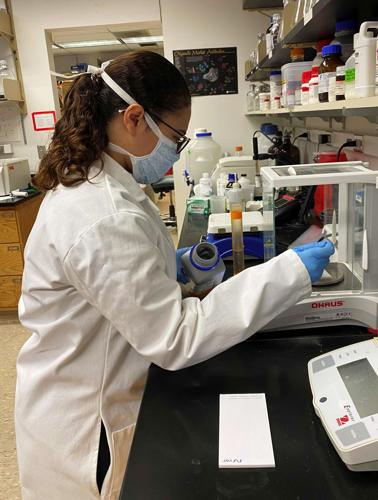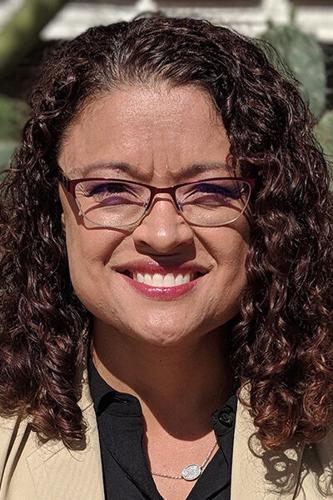The University of Arizona was awarded a $5 million federal grant to support more students — especially those who are Hispanic or from low-income households — studying science, technology, engineering and math.
The five-year grant from the U.S. Department of Education is aimed to aid students to more easily transfer to the UA from other institutions, and help students experience a sense of belonging in their STEM programs, officials said. The project also is to increase the number of undergraduate research opportunities, train faculty, staff and student mentors on improving inclusivity in their interactions with students and increase graduation rates of Hispanics in STEM majors.
Kimberly Sierra-Cajas, director of undergraduate research and inquiry in the Office of Societal Impacts, is the principal investigator and project director for the grant. She said the way UA students currently move through their academics is a “one-size-fits-all model” that doesn’t always take into account “the cultural norms that are predominant in the Latinx culture,” such as a strong sense of community and family responsibility. Latinx is a gender-neutral term for people from Spanish-speaking cultures or of Latin American descent.

Sierra-Cajas
“Inherent in this grant is our responsibility to address barriers students experience throughout our institutional structures and environment that lead to disparities in STEM graduation rates,” Sierra-Cajas said.
Data shows fewer than half of Hispanic UA students who start in STEM majors complete their programs within six years, she said. And only a third of Latino students with STEM majors who receive Pell Grants — federal grants for students with financial need — graduate with a STEM degree in six years. About 42% of Latino transfer students graduate within three years of transferring.
The grant will address on how to advise and navigate the complex system to take into consideration that many students have to hold down jobs while in school and have considerable responsibilities for families that tax their time and resources, said Sierra-Cajas.
“Typically, only one plan is proposed by each STEM department, assuming that will fit the reality of all students. This disconnect contributes to a disparity in successful completion of STEM courses,” she said. “Not taking into account the lived realities of Latinx and low-income students can lead to students struggling academically and feeling like they do not belong as soon as they begin to struggle in courses. As a result, students often drop out of the STEM pipeline, if not the university,” said Sierra-Cajas.
She said transfer students have said they need specific guidance on balancing general education and STEM gateway courses to avoid stacked STEM schedules in their first semester at the university. “Many students transfer and take three to four STEM classes at one time, while having to work 20-40 hours,” Sierra-Cajas said.

Daniela Ortiz is a participant in the ASEMS Scholars Program.
Hispanic students need to feel welcomed and feel a sense of belonging in STEM departments at universities, and this helps when students are connecting “with STEM faculty, professionals, and peers, especially through academic, and co-curricular activities,” Sierra-Cajas explained. The project also aims to find research for Hispanic students in areas that they are interested in and topics relevant to the needs of their communities, connecting them to those research opportunities.
The grant will also allow more faculty members to participate in the university’s Culturally Responsive Curriculum Development Institute, a weeklong summer program that supports participants in implementing more inclusive teaching and learning practices in their courses. The institute helps faculty members to redesign their courses incorporating aspects of students’ cultural backgrounds into the course curriculum.
The institute now welcomes 20 participants a year and is open to faculty applicants across the university. Participants who complete the program receive a $1,000 stipend. The institute will be able to enroll an additional 10 faculty members who teach introductory STEM courses in math, computer science, physics, chemistry and biology, said Judy Marquez Kiyama, co-principal investigator on the grant, who leads the institute as associate vice provost for faculty development.

Kiyama
The institute will teach faculty to develop course content that reflects students’ cultural backgrounds and histories,” said Kiyama, who is also a professor in the College of Education. Similar training will also be developed for advisers and other student support staff who mentor and engage with students, she said. In the first training last year, 22 courses across the university were redesigned and over 2,000 students were impacted.







